In this article, we will learn about different types of chips in metal cutting. When metals are finished in manufacturing industries through the machining process than metal chips are produced. These metal chips may be of different types. The chips formed depend upon the types of materials used and other factors too. Here we will discuss them in detail.
During the machining process of the workpiece to give it the desired shape, metal chips are produced. The chips formed may be of continuous, discontinuous and continuous with built-up edge type. The types of chips formed in the machining process depend upon so many factors, we will discuss it later. Basically there are three types of chips produced in the metal machining and these are continuous, discontinuous and continuous with built-up edge.
Types of Chips

The various types of chips in metal cutting are
- Continuous chips
- Discontinuous chips &
- Continuous chips with built-up edge (or BUE chips)
Let’s discuss about them one by one
1. Continuous Chips
If the metal chips formed during machining is without segments i.e. without breakage, then it is called as continuous types of chips.

Continuous chips are formed when the ductile material is machined with high cutting speed and minimum friction between the chip and tool face.
The conditions which are responsible for the formation of continuous types of chips are
- Ductile material like mild steel is used.
- The bigger rake angle of the tool.
- High cutting speed.
- Minimum friction between the chip and tool interface.
- Small depth of cut.
Advantages
The formation of continuous chips during machining process has the following advantages
- Better surface finish to the ductile material.
- Less heat generation due to minimum friction between the tool face and chip.
- Low power consumption.
- Long tool life due to less wear and tear.
Also Read:
- What is Lathe Machine? Main parts, Operations and Working
- What is Slotter Machine?
- What is Electrical Discharge Machining (EDM) Process and How it Works?
2. Discontinuous Chips
If the chips formed during machining process is not continuous i.e. formed with breakage is called discontinuous chips.

Discontinuous types of chips are formed when hard and brittle metals like brass, bronze and cast iron is machined.
Conditions which are responsible for the formation of discontinuous chips are:
- Low feed rate.
- Small rake angle of the tool.
- High cutting speed.
- High friction forces at the chip tool interface.
- Too much depth of cut.
Advantages
The formation of discontinuous types of chips in brittle materials provides good surface finish, increases the tool life and reduces the consumption of power.
Disadvantages
When discontinuous chips are formed in the ductile materials, the workpiece result in poor surface finish and excessive wear and tear of the tool takes place.
Also Read:
- Single Point Cutting Tool Geometry, Angles, Nomenclature and Signature
- Ultrasonic Machining (USM) – Main Parts, Working Principle, Advantages and Disadvantages with Application
- How Electron Beam Machining Process Works?
3. Continuous Chips with Built Up Edge

Continuous chips with built up edge is formed by machining ductile material with high friction at the chip-tool interface.
It is similar to the continuous types of chips but it is of less smoothness due to the built up edge.
How Built Up Edge is Formed?
When the chip is flows in upward direction and high friction is exist in between the interface of the chip and tool. Due to the high friction between the chip and tool a very intense heat is generated at the nose of the tool. The compressed metal adjacent to the tool nose gets welded to it. This compressed metal welded to the nose is called built up edge. When the chip flows through this built up edge, it gets broken and carried away by the chip and called as built up edge chips, the rest of the built up edge is adhere to the surface of the workpiece and makes it rough.
Due to formation of the built up edge the rake angle of the tool gets changed and so is the cutting force.
The factors which are responsible for promoting the formation of the BUE chips are:
- Excessive feed rate.
- The small rake angle of the tool.
- Low cutting speed.
- Lack of coolant and this increase the friction between the chip tool interfaces.
Advantages
The making of the BUE has one advantage i.e. it protects the tool from getting damaged from high friction and temperature generated during the machining process and hence the tool life increases.
Disadvantages
The formation of these types of chips results in rough surface finish, change in the rake angle and cutting forces.
Comparison between Continuous, Discontinues and Continuous Chips with Built up Edge in Tabular Form are:
| S.no | Factors | Continuous Chips | Discontinuous Chips | Continuous chips with Built Up Edge (BUE) |
| 1. | Material types | Ductile | Brittle, ductile but hard | Ductile |
| 2. | Rake angle | Large | Small | Small |
| 3. | Cutting speed | High | Medium or high | Low or medium |
| 4. | Friction between chip tool interface | Minimum | Maximum | Maximum |
| 5. | Depth of cut | Small | High | Medium |
This is all about the different types of chips in metal cutting. If you find anything missing or incorrect than comment us. And if you find this article informative and useful than don’t forget to share it.
Image Source: http://www.mech4study.com/2016/03/types-of-chips.html

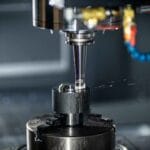
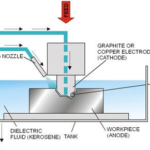
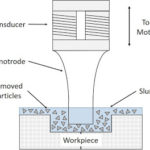

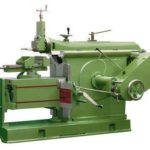

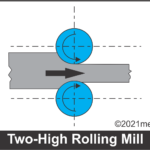
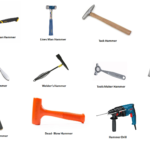
Nice Article
Nice notes bro
Welding ke bhi note deejiye
Full notes welding
Thank you Sir. The Information is Very Useful.